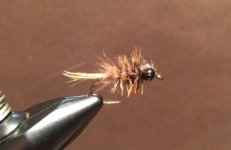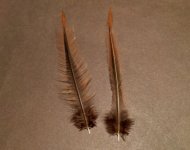Talyn wrote:
I'll be back there for 2 weeks in mid-May and am willing to travel from SE Butler Co a reasonable distance to rendezvous if possible.
Taly,
Welcome to our online community and welcome back to PA (at least in an online sense.🙂 )
Although living in MT you've got a new crop of fishing buddies back east again. Glad you were able to find that particular fly. The online archive of PA Angler-Boater is a great historical resource.
When you're back in May, if it fits your schedule, we are having our annual get together called "the jam" on the weekend of the 20th. This will be in center state, probably 2-3 hours from Butler. Check the Events forum to follow our discussion. You're welcome to join us. We do some fly tying (nothing formal, just some dudes at a picnic table) and can give you some tips.









